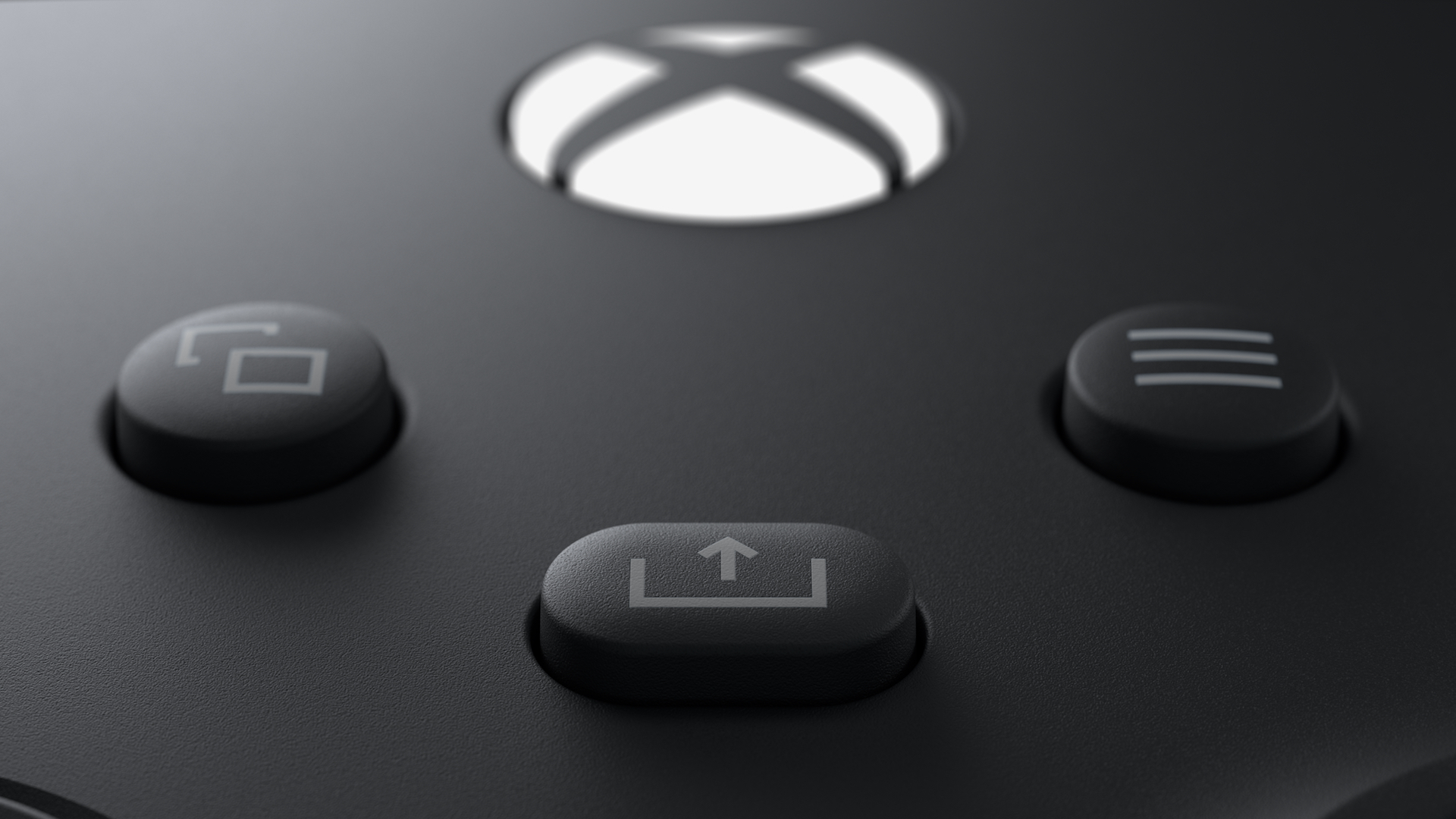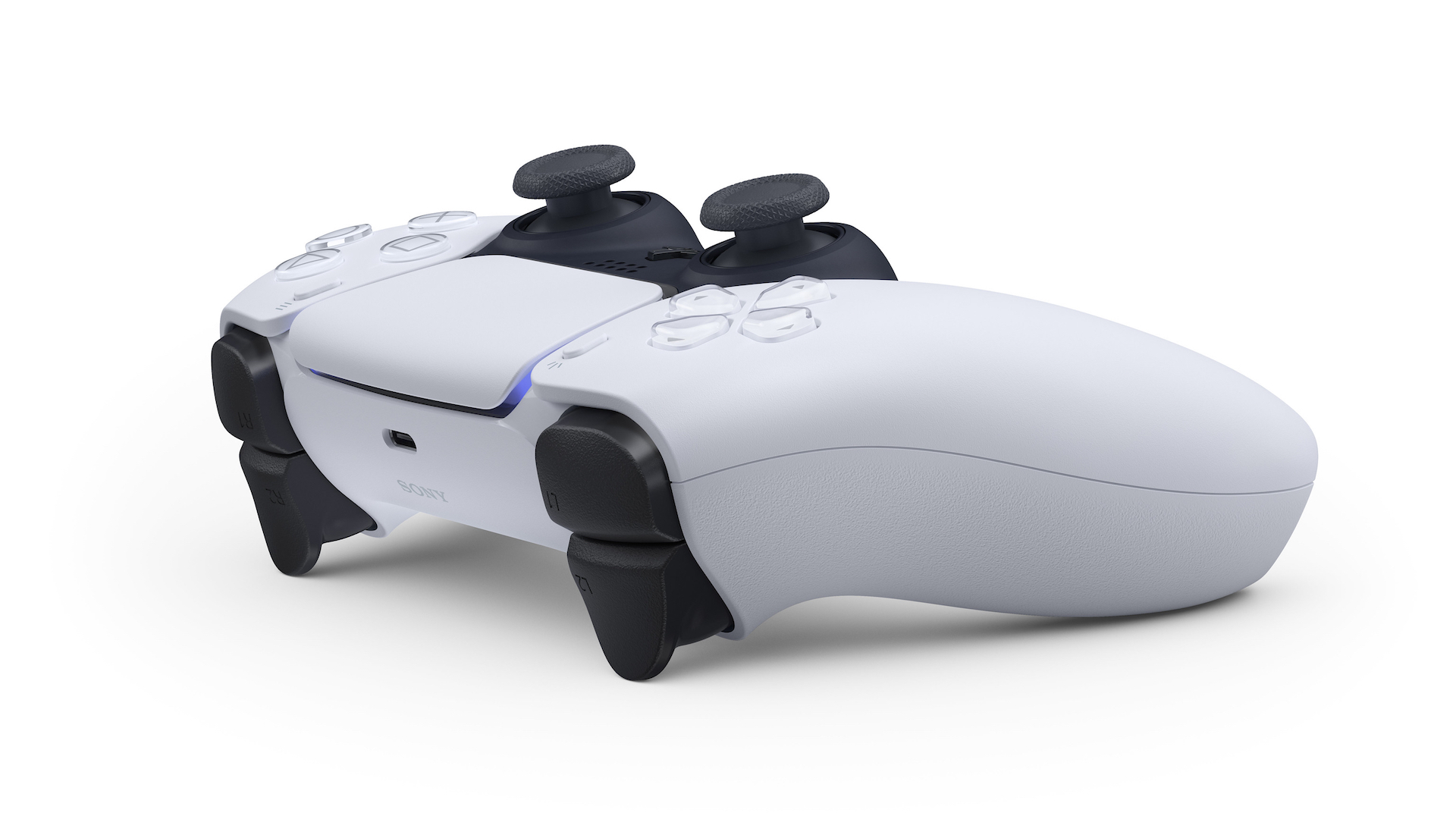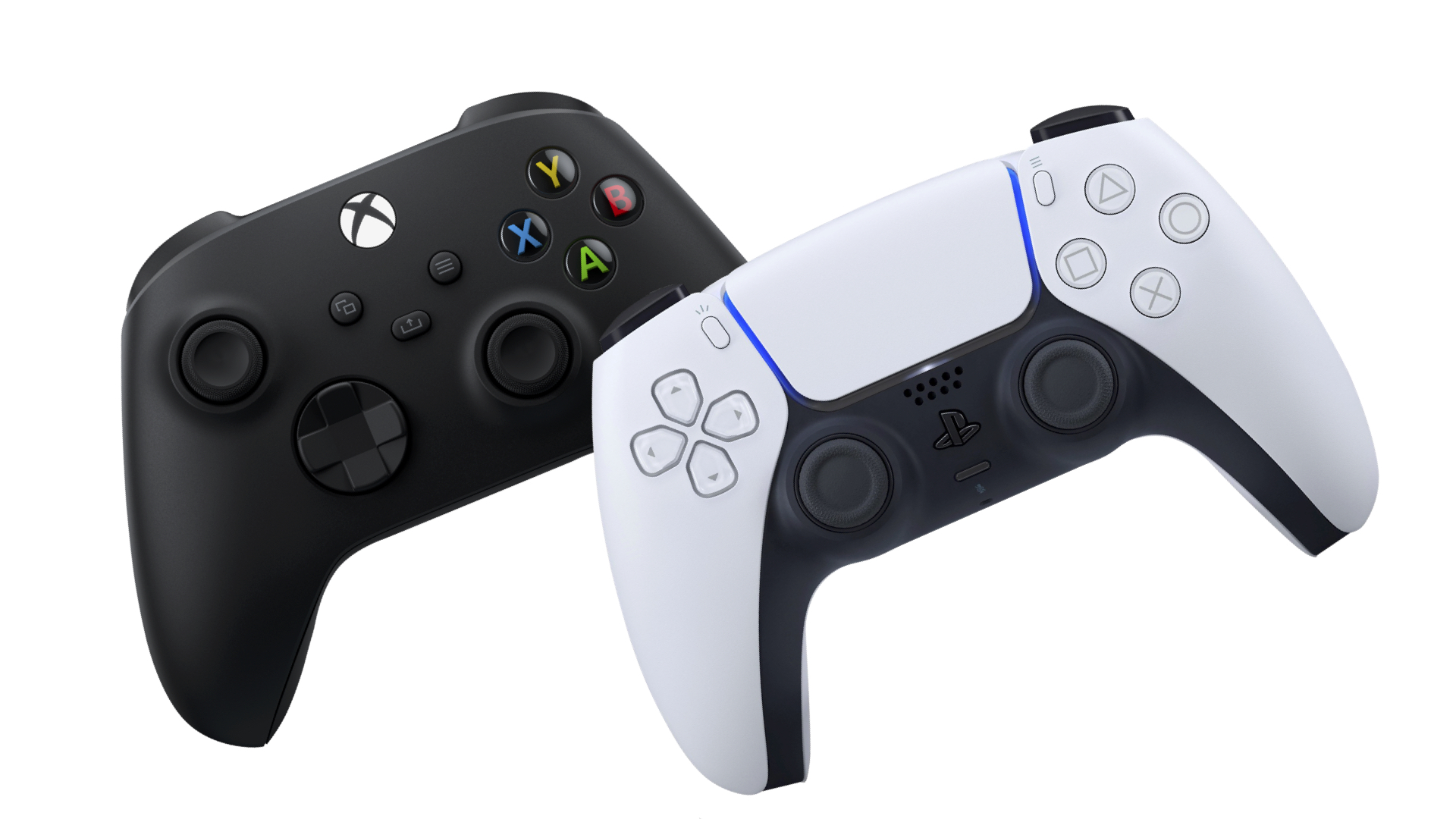
Recently, in trying to determine which of the two upcoming next-gen consoles are going to be a better purchase when they launch later this year, we compared the specs of both. We’re back for another round of those comparisons, and this time, we’ll be looking at something else- the controllers of the PS5 and Xbox Series X.
Without further ado, let’s get started.
XBOX SERIES X
When it comes to controller, at least this current generation, both the PS4 and Xbox One have been pretty neck and neck. The DualShock 4 was a major improvement over its predecessor in terms of build quality, with features such as its touchpad and its Share button providing a big boost over the DualShock 3 as well. On the other hand, the Xbox One controller may not have had similar advancements in terms of features, but it was defined by great ergonomics and build quality, just as the Xbox 360 controller was. With the PS5 and Xbox Series X then, the competition in terms of controllers was pretty neck-and-neck right off the bat, before we even knew the specifics of what the two next-gen consoles’ new controllers would be like- but now that we do have that information, we have a lot to say.
Let’s start with the Xbox Series X controller- which is a much more iterative upgrade than the DualSense in more ways than one. Microsoft have, of course, introduced improvements over the Xbox One controller, many of which shouldn’t be discounted or waved away. The first and most obvious of these is the addition of a Share button, finally catching up with the DualShock 4 so many years later.
Microsoft knows as well as we all do that this is now a fundamental feature that controllers are expected to have, with sharing and creating options become more and more intrinsically tied to games day by day, and though this is not a major revolution by any means, it’s still great to know that the controller isn’t going to be lagging behind in such an important feature.
Of course, we still don’t have something equivalent to the PlayStation’s touchpad on the Xbox Series X controller, which potentially means the former has more input options – on paper, at any rate – but if the PS4/Xbox One generation has taught us anything, it’s that the touchpad is more of a novelty than anything else. While some developers have definitely found unique and clever ways to use it, by and large, the DualShock 4’s touchpad hasn’t ever felt like a crucial part of the controller, so the Xbox Series X controller not catching up to it in that regards one way or another doesn’t feel like that big a deal.
Another big talking point with the Xbox Series X controller is what Microsoft are calling Dynamic Latency Input, which is a blanket term for several system-wide improvements, from the console itself to the HDMI connection to your display, all of which, according to Microsoft, boils down to the controller itself. What exactly does it do though? Well, as its name suggests, it cuts down on input latency. According to Microsoft, it will “shave off precious milliseconds at every step of gameplay”, which should make gameplay feel more immediate and responsive. This is the very definition of iterative, of course, and something that the more casual gaming crowd probably won’t care about, but it’s still a great improvement to have, especially if you’re into competitive multiplayer games.
Beyond that, the Xbox Series X does have some minor – but by no means negligible – aesthetic and design changes as well. Most notably, the d-pad has received an overhaul. It now bears a cross design, lying on top of a plate of sorts. The buttons themselves are supposed to be crisp and allow for more precise directional inputs, while the plate or dish or whatever you want to call it ensures more accurate and responsive diagonal inputs and sweeping commands. According to Microsoft, it’s a hybrid design that’s the best of both worlds. D-pads, for some reason, have been historically hard to nail down in console controllers over the years, so here’s hoping this design works out well for the Xbox Series X.
There are some other minor improvements to speak of as well. The triggers and bumpers now have special textures- more specifically, tactile dot patterns and a matte finish for improved grip. Speaking of grip, the controller’s grips, too, have a similar pattern, to allow for better ergonomics. This, of course, is an area the Xbox controllers have always excelled in, so it’s good to know the Xbox Series X controller won’t be resting on its laurels.
Finally, the controller is still running on batteries, and while there are many who have been begging for Microsoft to include rechargeable batteries in their controllers for a while not, it’s worth noting that battery-powered controllers have their own advantages, so it’s not a total loss by any means. All of these are, of course, iterative changes- but perhaps the “if it ain’t broke, don’t fix it” mantra applies to this situation perfectly. The Xbox One controller is a pretty excellent one as it is, so it makes sense that its successor isn’t a radical leap over it. The fact that The Xbox One and Xbox Series X controller both have cross-generation compatibility is perfectly emblematic of that.
The PlayStation 5, on the other hand, is doing things far more differently…
DUALSENSE
While the Xbox Series X controller is following the “if it ain’t broke, don’t fix it” mantra, the PS5’s DualSense is taking bigger steps forward. It’s dropping the DualShock branding, for one, which is a big deal, considering the fact that the DualShock has been synonymous with the PlayStation brand for almost as long as the latter has existed. Sony tried to launch the PS3 with the Sixaxis as well, and did ultimately revert to DualShock, but they’ll be hoping for both success this time.
Aesthetically, it’s also a little different. The core design is still very similar to the DualShock 4, but there are some noticeable changes here and there. Its default colour is now white, similar to the PS5 as well, while it’s also much larger than its predecessor. From the looks of it, its shape and size have more in common with the Xbox controller than the DualShock 4 did, which should hopefully mean better ergonomics.
The more interesting changes are the ones being introduced in the controller’s innards though. The DualSense still has all of the big new features that were introduced with the DualShock 4 – including the Share button (which is now the Create button- more on this in a bit), the touchpad, the lightbar (which isn’t as prominent now), and the controller speakers – but there are more new interesting things going on as well, with a couple of really interesting additions.
The first of these is haptic feedback. The DualSense is dropping the standard rumble features that have been featured in console gamepads since the days of the N64, and now includes haptics, which means it has highly programmable actuators in its left and right grips, potentially making for a much broader range of feedback that can be programmed and finetuned to match gameplay more accurately. So, for instance, if you’re driving your car in a game on a muddy road, it’ll feel different through the vibrations in the controller than driving it on top of a frozen lake, or a dry road- you get the idea.
The other big change being introduced with the DualSense is adaptive triggers, with the L2 and R2 buttons now offering contextual resistance based on gameplay. Just as an example, then, if, say, your gun in a first person shooter jams, you will feel more resistance and tension in the right trigger. If you’re shooting a bow and arrow in a game, the trigger will become tighter and ore taut as you pull your bowstring.
Collectively, the haptic feedback and adaptive triggers of the DualSense present some interesting opportunities for heightened immersion, especially when combined with the PS5’s 3D audio Temptest engine, while the adaptive triggers in particular potentially have a lot of intriguing applications in terms of gameplay mechanics as well. On paper, they sound very exciting.
How much of a different these two new features will end up making depends on the execution, of course. There’s no shortage of examples over the years of controllers introducing new innovations that eventually get ignored and left by the wayside. This isn’t the first time we’re seeing haptics as the standard in a console, for instance- the Nintendo Switch’s HD Rumble was something Nintendo made a big deal of before the console’s launch, but we’re yet to see any major advantages from it. With PlayStation itself, there’s a few such examples as well, first with the PS3’s gyro features and then with the PS4’s touchpad, both of which were hyped up prior to launch but ended up making not much of a difference.
We’re hoping things will be different with the DualSense though, because as mentioned earlier, the adaptive triggers, haptic feedback, and 3D audio collectively can be a significant boost for immersion in games on the PS5. While it’s possible that third party multiplatform games will end up not doing too much with these features, we hope Sony’s first party studios will at least find exciting ways to make use of them.
Beyond these two headlining additions, there are some other things to speak of as well. There’s a built-in microphone in the DualSense now, for instance, which should allow for much more convenient and easier voice chat. While there’s potential from a lot of unintentional cross-talk and picking up random noises with something like this, we’re sure that Sony will have thought of those issues and come up with some noise-cancelling technologies (or we hope they have, at least). Meanwhile, the DualSense also replaces the DualShock 4’s Share button with a Create button. This isn’t something Sony have talked about too much, but they’re promising “new ways for players to create epic gameplay content to share with the world”, which is definitely exciting.
Finally, something else that’s recently come to light about the DualSense is its battery capacity. Though not coming from Sony themselves, the information allegedly comes from the manufacturer of various accessories for both Sony and Microsoft. As per this report, the DualSense has a battery capacity of 1560mA, which is nearly twice as much as what the DualShock 4 originally launched with at 800mA (though it’s worth noting that later DualShock 4 models have had a capacity of 1000mA). Of course, that won’t perfectly translate to the same increase in battery life, what with the DualSense’s haptics and adaptive triggers requiring more consumption, but the greater battery capacity should hopefully mean a larger battery life as well.
CONCLUSION
Where does all of that leave us then? It’s a classic case of iteration versus innovation. The Xbox Series X controller is building on excellent foundations, and it’s reluctant to rock the boat too much as a result. The DualSense, meanwhile, is also coming off the back of an excellent controller, but it’s taking more risks, and is introducing interesting changes and innovations, especially when compared to its predecessors and its direct competitors.
And as much as we love the Xbox controller, this one has to go to the DualSense. The design looks much better and sturdier, and the gulf in that respect between the two controllers now isn’t nearly as significant as it once used to be. More importantly though, the DualSense has two major new features to boast of, and it’s frankly a little surprising that the Xbox Series X controller doesn’t have haptics and adaptive triggers as well, especially given the fact that the Xbox Elite Controller 2 does have both those things.
Sure, whether or not the DualSense’s innovations will be as big of a deal as they’re being made out to be depends entirely on what developers do with them, but there’s a lot of potential here, and that excites us. We’re all for heightened immersion in games, and it’s worth remembering that the adaptive triggers in particular can have some really interesting gameplay applications as well, so if developers – especially first party studios – make sure that those features aren’t ignored and are properly utilized, that will be a big win for the PS5.
The Xbox Series X controller is still an excellent one, of course. Its predecessor was already one of the best standard gamepads around, so any controller that makes improvements on it – however iterative they might be – is an inherently solid one right off the bat. But the DualSense is doing far more exciting things, we feel. For the first time in a long time, it feels like the PlayStation has a clear edge over the Xbox when it comes to the controller.


















